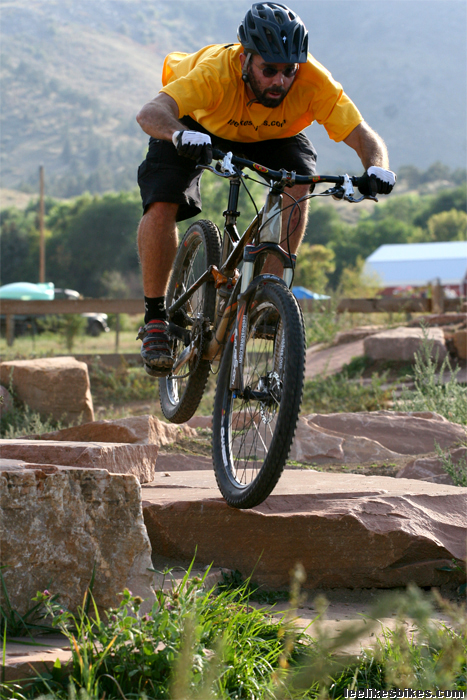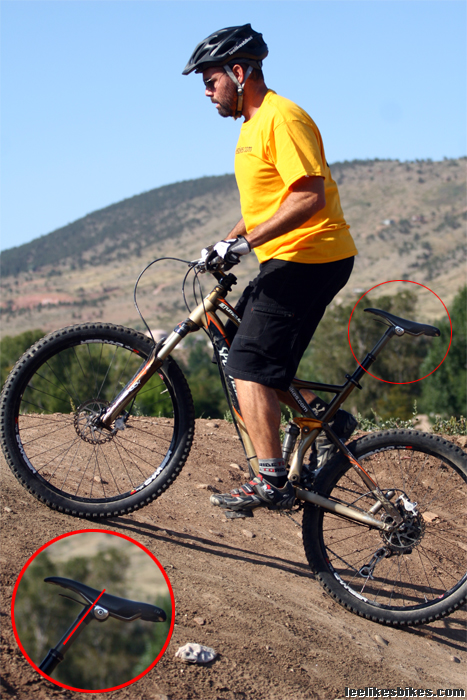Why is a slack seat angle so rip-able?

Hey Lee,
I know what I like but don’t know why. I have been riding a few demo bikes and find the slack 71.5-72 seat angle to feel great and very rip-able. When I jump on the 73/74 deg angle it feels … off even with similar head angles and bb heights. Any reason why? I also feel like I can ride with my seat lower with the slacker seat tube. Climbing and pedaling has the same results. Everyone keeps telling me “oh 73-74 will climb better.” I don’t see it. Lay it out for me bro.
MW
 My 2008 Stumpjumper Pro Carbon has a pretty steep seat angle. I pseudo-slacken it by sliding my seat back about an inch on its rails. Photo for MMBSii by Yosei Ikeda. |
Great question. As a matter of fact, MMBSii will contain lot more on this topic.
A slack seat angle places your seat farther back in relation to your bottom bracket. That has these effects:
Ripping
– It effectively shortens your top tube when you’re out of the saddle. The entire top tube is shifted back, and that brings the bars closer to you.
– Given an equal distance from the seat to the bottom bracket, a slacker seat tube places your seat lower vertically. This makes it easier to rip with your seat at full pedaling extension.
– Most of us have a tendency to keep our butts near our seats. This is almost always too far forward. A slacker seat angle encourages you to locate your hips a bit farther back. Maybe not as far back as I’d like, but farther back and closer to correct.
Pedaling
– Pushing your seat back changes the way you pedal. Compared with the triathlete-directly-over-the-pedals style, pedaling from the back of the bike recruits more glutes and hamstrings.
– Most of us can learn to pedal just fine that way. As my riding style and knees have (d)evolved over the years, my seats have been getting farther and farther back.
– Last winter I did a few indoor training sessions wired to a power meter, and I was more powerful in the saddle with my Stumpy’s slack seat tube than my Tricross’ steep one. Hey, whatever works. PowerMax indoor cycling workouts at the Boulder Center for Sports Medicine
 Sweet bike + dialed cockpit = rip-ability. At the Lyons Bike Park. Photo for MMBSii by Yosei Ikeda. |
OK, time to quantify
This wants to be a diagram, but I have to get back to MMBSii. Deadlines!
– Seat distance from bottom bracket: 28.5 inches (about my distance)
– Seat angle comparison: 71 degree vs. 74 degree (slack vs. steep)
– Vertical seat height: The 71-degree seat angle places the seat almost one-half inch lower. That’s significant. When it comes to smashing your stuff, a millimeter is as good as a mile.
– Seat setback: The 71-degree seat angle places the seat about 1.5 inch farther back. It also brings the bars about that much closer when you’re ripping in attack position. Also very significant.
Making adjustments
You can create this much range by sliding your seat back on its rails and/or rocking a layback seatpost. My Stumpjumper and Enduro have pretty steep seat tube angles; I run my saddles back on their rails.
OK, back to work.
Rip it!
— Lee
Know more. Have more fun!
Join the leelikesbikes mailing list:

Comments are closed.